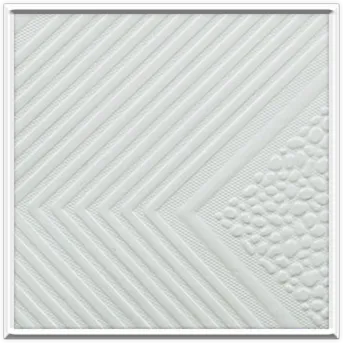- Afrikaans
- Albanian
- Amharic
- Arabic
- Armenian
- Azerbaijani
- Basque
- Belarusian
- Bengali
- Bosnian
- Bulgarian
- Catalan
- Cebuano
- Corsican
- Croatian
- Czech
- Danish
- Dutch
- English
- Esperanto
- Estonian
- French
- German
- Greek
- Hindi
- Indonesian
- irish
- Italian
- Japanese
- Korean
- Lao
- Malay
- Myanmar
- Norwegian
- Norwegian
- Polish
- Portuguese
- Romanian
- Russian
- Serbian
- Spanish
- Swedish
- Thai
- Turkish
- Ukrainian
- Uzbek
- Vietnamese
Dic . 10, 2024 09:57 Back to list
metal ceiling frame
Understanding Metal Ceiling Frames
In the world of architectural design and construction, ceiling frames play a crucial role in determining both the functionality and aesthetics of interior spaces. Among various ceiling framing options, metal ceiling frames have become increasingly popular due to their durability, versatility, and modern appeal. This article explores the characteristics, benefits, and applications of metal ceiling frames.
What is a Metal Ceiling Frame?
A metal ceiling frame is a structural system made from steel or aluminum that supports ceiling materials, such as tiles, panels, or drywall. These frames are often used in commercial buildings, educational institutions, healthcare facilities, and residential projects. Unlike traditional wooden frames, metal frames provide enhanced strength and stability, making them suitable for a wide range of applications.
Benefits of Metal Ceiling Frames
1. Durability and Longevity One of the most significant advantages of metal ceiling frames is their durability. Metal is resistant to common issues that affect wooden frames, such as warping, cracking, and pest infestations. This longevity means that metal ceiling frames can maintain their structural integrity over time, reducing the need for frequent repairs or replacements.
2. Fire Resistance Metal frames offer improved fire resistance compared to their wooden counterparts. This quality is particularly important in commercial and public buildings, where safety regulations necessitate the use of non-combustible materials. By incorporating a metal ceiling frame, architects and builders can enhance the fire safety of a structure.
3. Lightweight and Easy Installation Despite their strength, metal ceiling frames are relatively lightweight, which simplifies the installation process. They often come in prefabricated sections, allowing for quick and efficient assembly. This ease of installation can lead to cost savings on labor and reduced construction timelines.
4. Design Versatility Metal ceiling frames can accommodate various design styles, from modern and minimalist to more traditional aesthetics. They can be used to create different ceiling heights and configurations, including suspended ceilings, which are popular in commercial settings for concealing ductwork and electrical systems.
metal ceiling frame

5. Sustainability Metal is a recyclable material, making metal ceiling frames an environmentally friendly choice. As more building projects focus on sustainability, using recyclable materials can help contribute to green building certifications such as LEED (Leadership in Energy and Environmental Design).
Applications of Metal Ceiling Frames
Metal ceiling frames are versatile and can be applied in numerous settings
- Commercial Spaces In offices, retail stores, and shopping centers, metal ceiling frames can create sleek, modern environments. They allow for the integration of various lighting and HVAC systems, enhancing the overall functionality of the space.
- Healthcare Facilities Hospitals and clinics require materials that meet strict hygiene and fire safety standards. Metal ceiling frames are ideal for these settings, as they facilitate easy cleaning and are resistant to mold and bacteria.
- Educational Institutions Schools and universities often employ metal ceiling frames in classrooms and lecture halls. The durability of metal frames ensures they can withstand heavy use while providing a safe learning environment.
- Residential Projects Homeowners are increasingly adopting metal ceiling frames in their designs. From modern lofts to renovated historical homes, metal frames can support a variety of ceiling finishes, allowing for creative expression in residential spaces.
Conclusion
Metal ceiling frames represent a practical and stylish solution for both commercial and residential construction. Their durability, fire resistance, and lightweight nature make them an excellent choice for architects and builders looking to create functional and visually appealing spaces. With the growing emphasis on sustainability in the construction industry, the popularity of metal framing systems is likely to continue rising, making them a staple in modern architectural design. As we move towards more innovative building practices, metal ceiling frames will undoubtedly play a pivotal role in shaping the future of interior spaces.
-
Transform Interiors with PVC Gypsum Ceiling: A Stylish, Durable, and Moisture-Resistant SolutionNewsMay.19,2025
-
The Smart Interior Upgrade: Discover the Durability and Versatility of Gypsum Ceiling Access Panel SolutionsNewsMay.19,2025
-
The Smart Choice for Interior Design: Discover the Value of PVC Gypsum Ceiling SolutionsNewsMay.19,2025
-
Mineral Fiber Ceiling Tiles: The Smart Blend of Performance and AestheticsNewsMay.19,2025
-
Mineral Fiber Ceiling Tiles: The Superior Choice Over Gypsum for Sound and Fire SafetyNewsMay.19,2025
-
Mineral Fiber Ceiling Tiles: Eco-Friendly Strength and Style for Every CeilingNewsMay.19,2025







